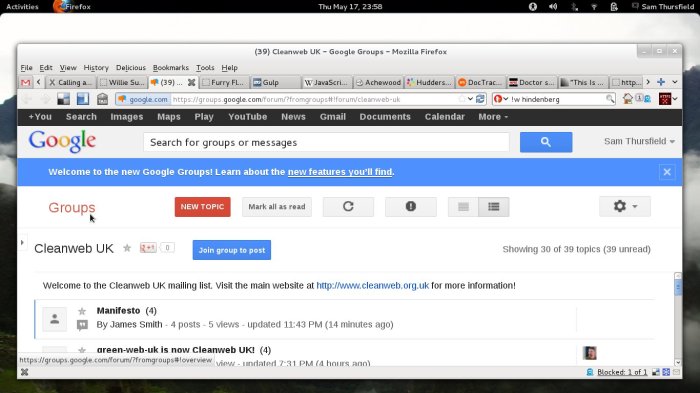I used to dislike creating websites. CSS confused me and JavaScript annoyed me.
In the last year I’ve grown to like web development again! The developer tools available in the web browsers of 2019 are incredible to work with. The desktop world is catching up, but but the browser world is ahead. I rarely have to write CSS at all. JavaScript has gained a lot of the features that it was inexplicably missing.
Here’s a list of the technologies I’ve recently used and liked.
First, Bootstrap. It’s really a set of CSS classes which turn HTML into something that “works out of the box” for creating decently styled webapps. To me it feels like a well-designed widget toolkit, a kind of web counterpart to GTK. Once you know what Bootstrap looks like, you realize that everyone else is already using it. Thanks to Bootstrap, I don’t really need to understand CSS at all anymore. Once you get bored of the default theme, you can try some others.
Then, jQuery. I guess everyone in the world uses jQuery. It provides powerful methods to access JavaScript functionality that is otherwise horrible to use. One of its main features is the ability to select elements from a HTML document using CSS selectors. Normally jQuery provides a function named $, so for example you could get the text of every paragraph in a document like this: $('p').text(). Open up your browser’s inspector and try it now! Now, try to do the same thing without jQuery — you’ll need at least 6 times more code.1
After that, Riot.js. Riot is a UI library which lets you create a web page using building blocks which they call custom tags. Each custom tag is a snippet of HTML. You can attach JavaScript properties and methods to a custom tag as well, and you can refer to them in the snippet of HTML giving you a powerful client-side template framework.
There are lots of “frameworks” which provide similar functionality to Riot.js. I find frameworks a bit overwhelming, and I’m suspicious of tools like create-react-app that need to generate code for me before I can even get started. I like that Riot can run completely in the browser without any special tooling required, and that it has one, specific purpose. Riot isn’t perfect; in particular I find the documentation quite hard to understand at times, but so far I’m enjoying using it.
Finally, lunr.js. Lunr provides a powerful full-text search engine, implemented completely as JavaScript that runs in your users’ web browsers. “Isn’t that a terrible idea?” you think. For large data sets, Lunr is not at all appropriate (you might consider its larger sibling Solr). For a small webapp or prototype, Lunr can work well and can save you from having to write and run a more complex backend service.
If, like I did, you think web development is super annoying due to bad tooling, give it another try! It’s (kind of) fun now!
1. Here’s how it looks without jQuery: Array.map(document.getElementsByTagName('p'), function(e) { return e.textContent; })
